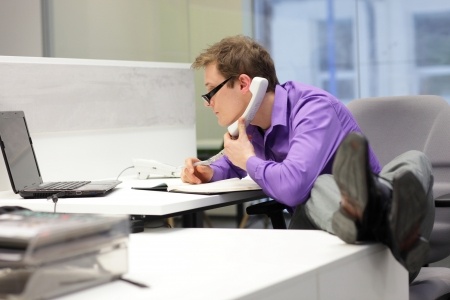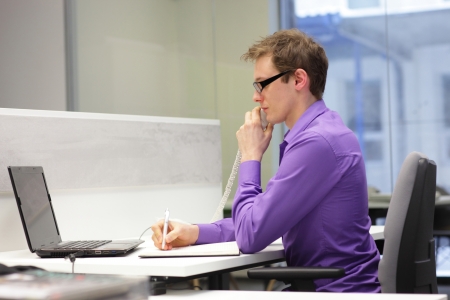Sitting Properly in Any Seat
How you posture yourself communicates to others who you are and what you represent. We have all been taught to "sit up straight" by parents and teachers. And likely only do so when in their presence.
But do you give much attention to what your sitting posture might look like to other people? Are you labeled confident? Comfortable? A slouch?
Presenting yourself well is always the aim no matter where you are. You want others to see the real you and not be distracted by body parts or positions that prevent them from hearing what you say or knowing who you are.
Professionally Seated
In an office environment, posture not only reveals your confidence and professionalism, it also plays a part in your health.
When slouched over a computer keyboard, you place unnecessary pressure on your spine and your breathing is shallow. While you may think you're being productive, you'll only end up with neck and back aches and decreased lung capacity. You can read more about the perils of slouching here.

Use your core muscles to keep yourself upright and position your computer screen so that it is eye level, preventing you from slouching and straining your neck by having to look down all the time. Place your feet flat on the floor with your chair at a level that allows you to sit at a 90 degree angle.

It's also a good practice to stand at least every 30 minutes to give your body and mind a little break.
Comfort and Confidence
Body posture is body language. Messages are constantly being sent!
When someone sits in a chair or couch, leaning against the back of the piece of furniture, you assume he is comfortable. If he does so while resting an arm or two on the back or arm of the furniture, you assume he is really comfortable. This position indicates he is "open" and agreeable to the conversation or situation at hand. If you're asking for a favor (or a raise) it's looking good!
When we sit down to eat a meal, we know to sit up straight with our feet on the floor and position ourselves close enough to the table so as not to spill food on ourselves. Comfortable, yet alert and prepared to enjoy good food and good conversation.
Signals of confidence come in a more traditional manner. While you may lean slightly back against the seat, you are still using your core for support. This not only keeps you upright, but helps project your voice at an appropriate volume. This is most helpful, and appreciated, during meetings and interviews.
Crossing your legs, thigh to knee, is a bit informal though generally fine. However, in some cultures seeing the bottom of the shoes is considered offensive. Crossing at the ankles is most universally appropriate - for men, positioned forward; for women, positioned to the side as demonstrated here.
Regardless of gender, a wide leg is offensive. For men, it signals an overly confident or over-bearing message. For women, it suggests she hasn’t learned to position the legs appropriately when wearing a skirt or dress (along with other subliminal messages).
Click here for a well-demonstrated tutorial on traditional sitting methods.
Wait for an Invitation
Sitting with someone else indicates familiarity. This is why we wait for an invitation to sit down when entering someone's space.
At a restaurant, when you stop to say hello to someone and she says, "Please, sit down and join me" you know you are welcome in that space. You've been invited to continue your conversation and perhaps share a meal. But if you stop to say hello and simply plop down in the chair next to her, it may seem invasive and assumptive.
Particularly when attending a job interview or important meeting, make a positive impression by waiting to sit. Not only does this indicate your professionalism, it prevents you from sitting in a seat reserved for someone else.
Posture and timing work together to present you in a positive manner.














